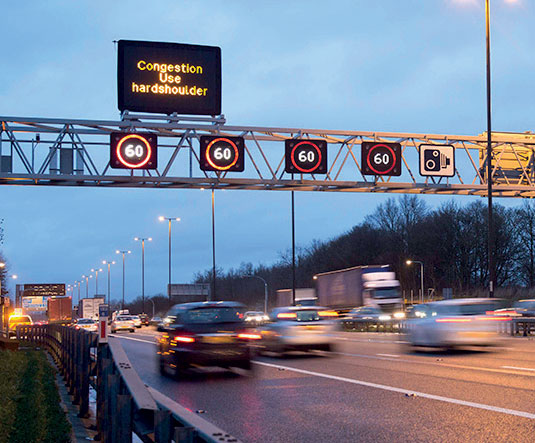Letters to the editor and comments online
Your View
Main Point
More smart motorway insight needed
The concept of smart motorways arose because of a need for extra traffic capacity set against the inability to obtain land for various reasons. Now that so much investment has been made and serious safety implications have so obviously arisen, surely it is time to re-examine objectives.
When motorways are running well below capacity and speeds are high, that is when serious collisions are likely to occur and vehicle breakdowns cause the greatest danger, necessitating an available hard shoulder for refuge.
As traffic density increases and traditionally configured motorway capacity limits are reached, that is when the argument to let traffic use an extra lane occurs. However, in such situations the traffic speed drops dramatically and the seriousness of collisions is considerably reduced.
Now that the infrastructure is changed, surely a simple enforceable road rule could be made that, for example, the inner lane may only be used when the gantries display a 30mph or 40mph speed limit. A similar type of lane management has existed at many congested motorway junctions for many years, why not adopt it for running traffic?
Henri Pageot (F), pageot@hotmail.co.uk
 I agree with Jim O’Rourke (Your View, NCE, June) that coverage of the very important but complex issue of smart motorways has been far from adequate. National Highways is in a difficult position because its inexplicably dreadful decision-making led to where we are now. I believe National Highways still owes the public an explanation for how a proven good idea was taken and implemented in a way that created the dangers that are now very evident.
I agree with Jim O’Rourke (Your View, NCE, June) that coverage of the very important but complex issue of smart motorways has been far from adequate. National Highways is in a difficult position because its inexplicably dreadful decision-making led to where we are now. I believe National Highways still owes the public an explanation for how a proven good idea was taken and implemented in a way that created the dangers that are now very evident.
National Highways seems to accept its past failings and action is being taken to put right the schemes already built.
Whether this will be fully achievable remains to be seen.
NCE’s reporting of the issue has not been as informative as I would have liked. I would have hoped for more detailed discussion, presenting the facts in a balanced way, including the original basis for the programme, which was a successful experiment on the M42.
The editor’s reply to O’Rourke says that NCE reported in the June issue the recent government decision to cancel the programme but did not explore at all what may follow in due course, once all the schemes have been brought much nearer to the original standard set in the M42 trial. It would be most helpful to have an analysis of the accident statistics relating to all the schemes built so far and a comparison made of these with previous statistics for the same lengths of road.
In particular, a longer-term examination of M42 statistics would be most interesting as these would relate to a properly designed scheme and give a valuable before and after comparison.
Stuart Beniston (M), beniston1@ntlworld.com
- Editor’s note: The article in June was a snapshot of the coverage that NCE has given – online and in print – to the issue of smart motorways since the first trials were undertaken on the M42 in 2006. Where we have been able to obtain data regarding safety, either through Freedom of Information requests or from Department for Transport reports, we have shared that, but I agree that we could repeat the exercise. Following the cancellation of future projects, we have tried to set up interviews to look at what comes next and how the current projects will become safer following upgrade, but as yet although National Highways’ Smart Motorways Programme Alliance has agreed an interview would be useful, it has yet to agree a date.
The Editor, New Civil Engineer,
4th Floor, Harmsworth House, 13-15 Bouverie Street, London EC4Y 8DP
Email: nceedit@emap.com
Please state whether you require your contact details to be withheld should your letter be published